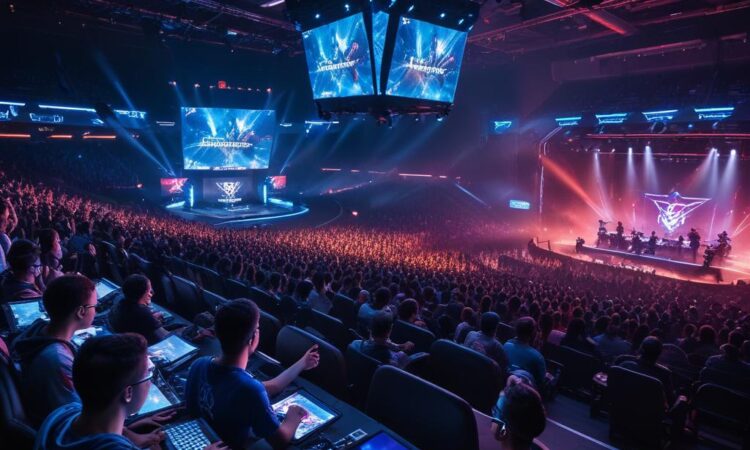The Impact of Esports on Traditional Sports: Collaboration and Competition
The world of sports is undergoing a seismic shift, fueled by the meteoric rise of esports. Once considered niche, esports has become a global phenomenon, captivating millions and attracting substantial investment. This burgeoning industry is not merely coexisting with traditional sports; it’s actively interacting, fostering both collaboration and competition in an evolving sports landscape.
The Dawn of Convergence: Partnerships and Collaborations
The lines between esports and traditional sports are blurring as they recognize the potential for mutual benefit. Partnerships and collaborations are becoming increasingly common, opening up new avenues for growth and engagement.
Shared Audiences and Cross-Promotion
One of the most compelling drivers of collaboration is the shared audience. Esports has a vast and engaged fanbase, particularly among younger demographics. Traditional sports, seeking to attract these new audiences, are finding esports to be a valuable platform for cross-promotion.
For example, the NBA has embraced esports, hosting events like the NBA 2K League, which features professional gamers competing in virtual basketball. This initiative allows the NBA to connect with younger audiences who may not be as familiar with traditional basketball.
Leveraging Expertise and Technology
The rise of esports has also introduced innovative technologies and strategies that traditional sports are keen to adopt. Esports teams and organizers have developed cutting-edge approaches to data analysis, fan engagement, and content creation.
Traditional sports organizations are increasingly tapping into this expertise to enhance their own operations. By partnering with esports teams, they can learn from their experience in areas like live streaming, social media management, and fan interaction.
Competitive Coexistence: A New Era of Sport
While collaboration is on the rise, there is also a competitive dynamic at play. Esports and traditional sports are vying for the same audiences, sponsorship dollars, and media attention. This rivalry can be seen in the growing popularity of esports events and the increasing investment in professional esports teams.
Competing for Viewership and Attention
Esports events, with their high-energy format and accessibility, are attracting large audiences, rivaling the viewership of traditional sporting events. This has led to increased competition for both media coverage and fan attention.
Traditional sports organizations are aware of this challenge and are seeking to adapt their offerings to remain relevant in a digital age. They are exploring new ways to engage fans online, creating more immersive experiences, and embracing new technologies.
The Rise of Esports Sponsorships
Esports has become increasingly attractive to brands seeking to reach younger audiences. Major corporations are investing heavily in esports sponsorship, putting pressure on traditional sports to compete for this lucrative market.
This shift in sponsorship patterns reflects the changing demographics and media consumption habits of the younger generation. Brands are targeting audiences where they are most active, and esports has emerged as a powerful platform for reaching these demographics.
Looking Ahead: A Future of Collaboration and Competition
The relationship between esports and traditional sports is complex and constantly evolving. While there is competition for resources and audiences, there is also significant potential for collaboration and innovation.
A Unified Sports Landscape
The future of sports may lie in a unified landscape where esports and traditional sports complement each other. This integration could involve shared events, cross-promotion, and the development of new hybrid sports experiences.
The Importance of Innovation
Both esports and traditional sports need to embrace innovation to thrive in a competitive landscape. This includes exploring new technologies, engaging with audiences in new ways, and adapting to changing trends.
Conclusion: A New Chapter in the History of Sports
The impact of esports on traditional sports is undeniable. This growing relationship is shaping the future of sports, creating opportunities for both collaboration and competition. As the esports industry continues to evolve, traditional sports organizations must adapt and embrace the changes to remain relevant and engaging.
The convergence of esports and traditional sports is a testament to the power of innovation and the evolving landscape of entertainment. This dynamic relationship will continue to shape the future of sports, bringing new audiences, technologies, and experiences to a world of possibilities.

